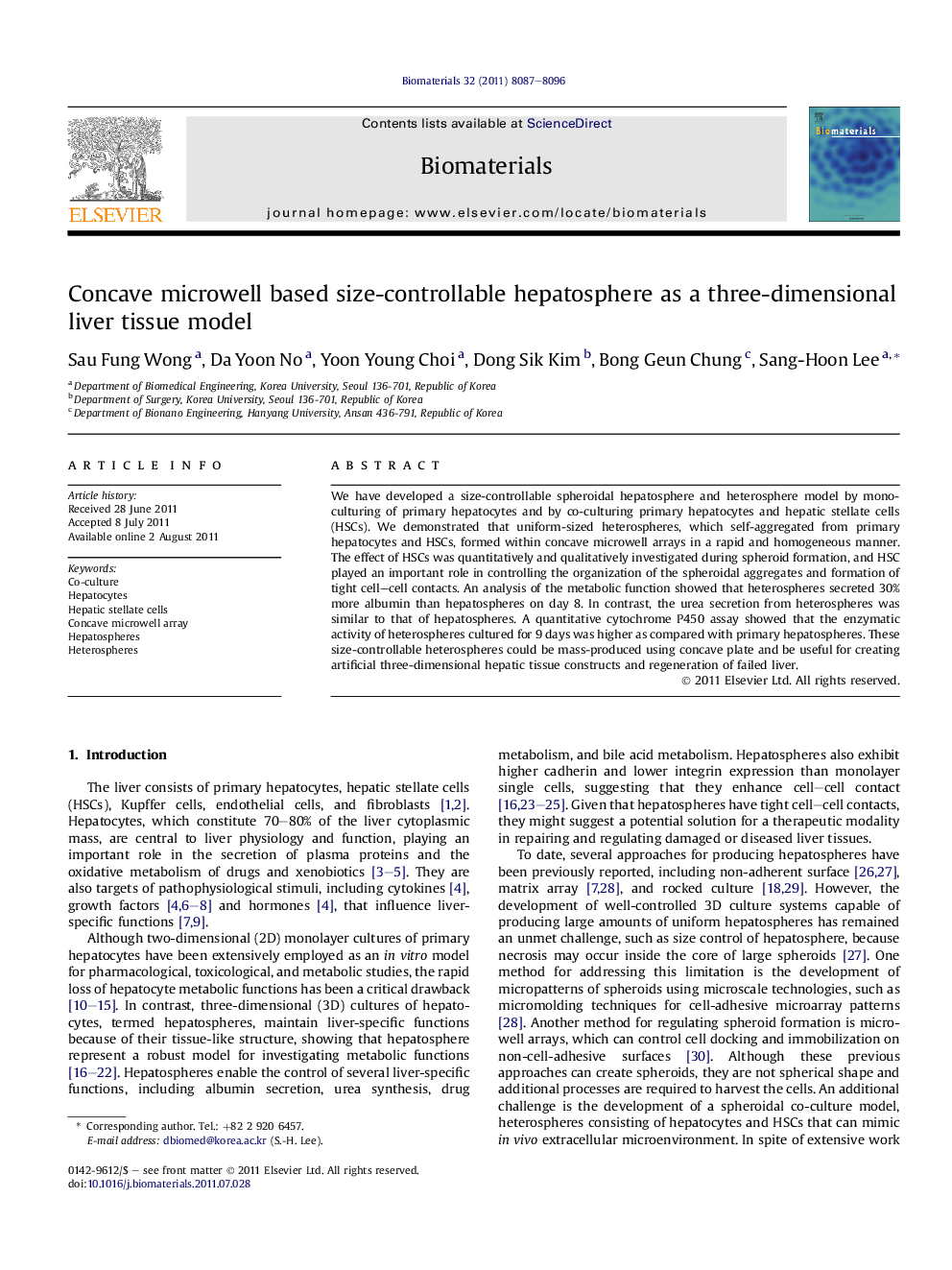| Article ID | Journal | Published Year | Pages | File Type |
|---|---|---|---|---|
| 7998 | Biomaterials | 2011 | 10 Pages |
We have developed a size-controllable spheroidal hepatosphere and heterosphere model by mono-culturing of primary hepatocytes and by co-culturing primary hepatocytes and hepatic stellate cells (HSCs). We demonstrated that uniform-sized heterospheres, which self-aggregated from primary hepatocytes and HSCs, formed within concave microwell arrays in a rapid and homogeneous manner. The effect of HSCs was quantitatively and qualitatively investigated during spheroid formation, and HSC played an important role in controlling the organization of the spheroidal aggregates and formation of tight cell–cell contacts. An analysis of the metabolic function showed that heterospheres secreted 30% more albumin than hepatospheres on day 8. In contrast, the urea secretion from heterospheres was similar to that of hepatospheres. A quantitative cytochrome P450 assay showed that the enzymatic activity of heterospheres cultured for 9 days was higher as compared with primary hepatospheres. These size-controllable heterospheres could be mass-produced using concave plate and be useful for creating artificial three-dimensional hepatic tissue constructs and regeneration of failed liver.
